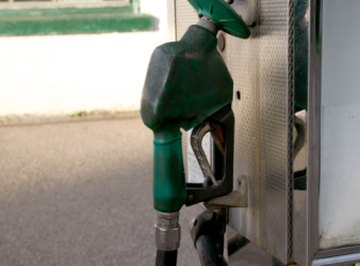
If you’ve ever wondered how the calorie content in food is determined, or how experts determine what quality of fuel is optimal or safe for use in vehicles, here is your answer: bomb calorimetry. Bomb calorimeters are devices used to determine the heat of combustion of a chemical reaction. The information gathered from a bomb calorimeter during a chemical reaction tells scientists whether certain products are safe for use and the quality level of each product being tested.
Thermodynamic Studies
Bomb calorimetry at its most basic form is the scientific study of thermodynamic processes. A bomb calorimeter measures the heat of combustion produced in a chemical reaction, as well as reaction enthalpy, heats involved in formation, heats involved in the reaction, and change in enthalpy throughout the reaction. Bomb calorimeters are essential to scientific and theoretical thermodynamic studies.
Educational Training
Another common use of bomb calorimeters is in education training. Calorimetry is taught in university-level science courses, as well as some high school classes. Individuals pursuing careers in a field that requires the use of bomb calorimetry must first become very familiar with the processes involved with using a bomb calorimeter.
Fuel Testing
Bomb calorimeters are used to test the calorific value of solid and liquid fuels, which are traded based on that value. Fuels such as coal and oil must meet regulations specifying the total calorific value, quality and purity of the fuel. Liquid fuels like gasoline and kerosene are also tested by bomb calorimetry. The measure of energy give-off by the fuel is determined by the fuel’s heat of combustion.
Waste and Refuse Disposal
The cement industry is one of several industries that use hazardous waste as an alternative fuel. However, the use of hazardous waste as fuel is regulated by the government, including the Environmental Protection Agency (EPA). Bomb calorimetry is used to determine whether hazardous waste fuel meets those regulations and is safe and appropriate for use.
Metabolic Studies
Bomb calorimetry can be used to determine the calorie content of a product. This process is used in food and metabolic studies to examine the effects of energy content in food on humans and animals. These studies have implications that extend into nutritional considerations and health concerns regarding the effects of diet on the body.
Propellant and Explosive Testing
Propellants and explosives are tested using a bomb calorimeter to find each product’s heat of detonation. Propellants typically burn predictably at a steady rate, while explosives are unstable and exert a huge amount of pressure with the induction of the chemical reaction — information about both of these processes are identified with bomb calorimetry.
References
- “Methods and Standards in Bomb Calorimetry”; J August Fries; 2010.
- “Comprehensive Handbook of Calorimetry and Thermal Analysis”; The Japan Society of Calorimetry and Thermal Analysis, Michio Sorai; 2004.
Photo Credits
Jupiterimages/Photos.com/Getty Images
